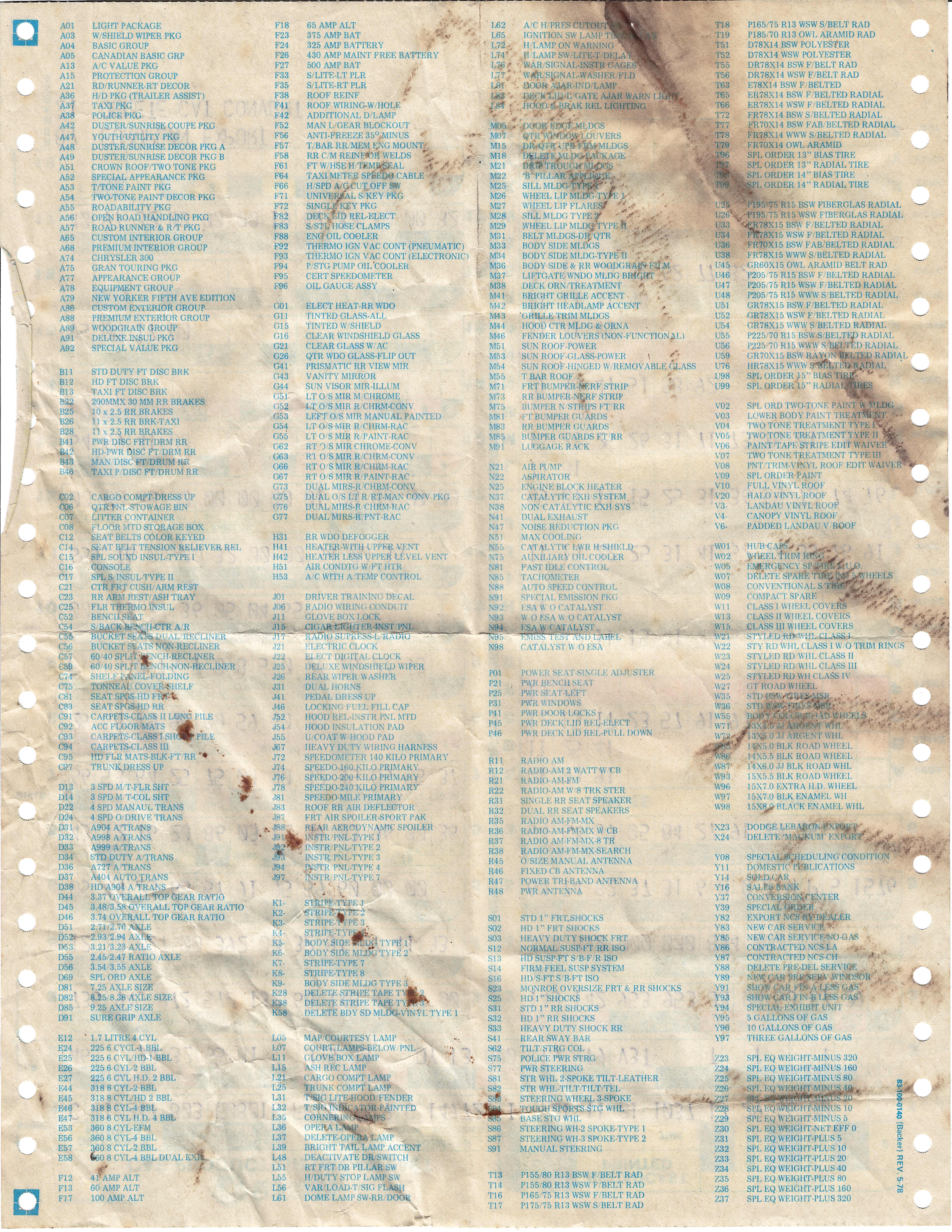I _assume_ that the original buyer had it already, mabe it was needed for registration in europe at that time in the netherlands.
Reason is because it was in very decent shape and the seller (2nd owner) didn't know anything about was it was, but luckily kept it with the car.
As the seller was neither into the details of the car nor did he mess/work on it, I think he would probably just have tossed it as junk if he would have found it.
But thats only my weird thinking . There was nothing below the rear bench when I removed it (usual location for the earlier Mopars). I did not lift the carpet, yet.
. There was nothing below the rear bench when I removed it (usual location for the earlier Mopars). I did not lift the carpet, yet.
Oh, and many thanks to BudW for the insight.
I'll later post the build sheet for the car.
Reason is because it was in very decent shape and the seller (2nd owner) didn't know anything about was it was, but luckily kept it with the car.
As the seller was neither into the details of the car nor did he mess/work on it, I think he would probably just have tossed it as junk if he would have found it.
But thats only my weird thinking
Oh, and many thanks to BudW for the insight.
I'll later post the build sheet for the car.
















